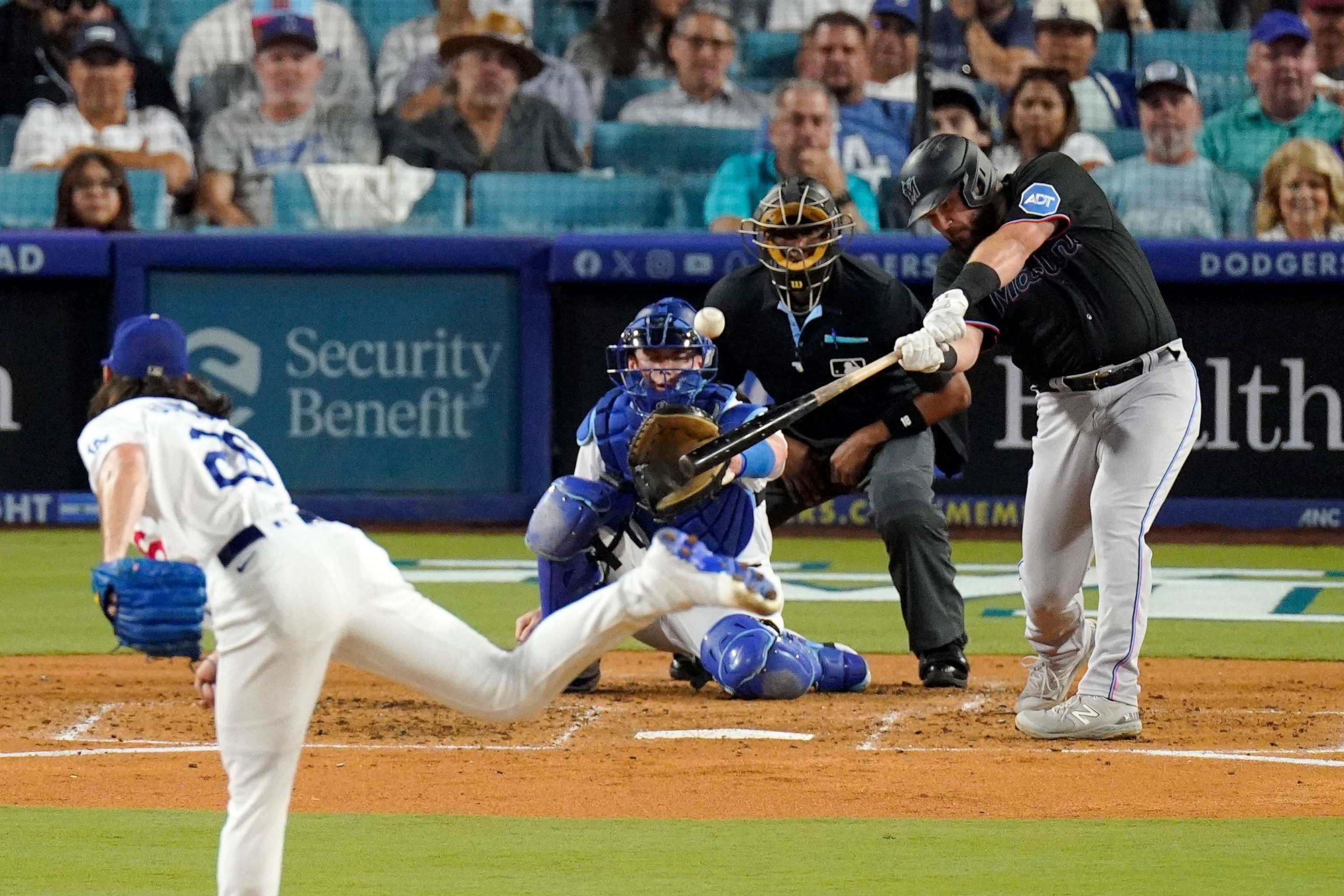MLB testing new technology during games to help settle balls vs. strikes conflicts
ABS tracks the ball from the pitcher's mound to the catcher's mitt.
Some of the world’s most contentious land battles may take place at a baseball field's home plate. Now Major League Baseball is turning to cameras and computers in an effort to settle some of those fights over balls and strikes.
MLB is testing a new technology in all the AAA parks across the country called the "automated ball and strike calling system,” or ABS. Engineers from MLB have been working on the system since 2019: it now consists of specialized cameras from Hawk-Eye, arranged around the park, that track the ball from the pitcher's mound to the catcher's mitt.

At a recent game for the Lehigh Valley Iron Pigs, a AAA affiliate of the Philadelphia Phillies, the technology was used to handle a “challenge” call. The umpire calls balls and strikes, and the hitter, catcher or pitcher challenges a call. Then the in-stadium scoreboard displays ABS’ decision.
“I have a certain amount of challenges I can use and I'm gonna use that in this particular moment to argue balls and strikes,” says Doug Glanville, a former major leaguer with the Cubs, Phillies and Rangers and analyst for both ESPN and Marquee sports. “And then the technology will kind of be the, the final, uh, judge in all this.”
Glanville says one of the most important parts of testing ABS is making sure it doesn't drag too much on the flow of the game:
“You want something that won't interfere, where everybody's spending more time adjudicating the sport then you are actually playing it,” he says.
He says that the technology adds a new layer to the game for players who are frustrated by what they believe to be incorrect calls.
“This will put the -- your money where your mouth is,” says Glanville. “Now you're gonna lose a challenge if you're wrong. And I think people will kind of like, think twice a little bit about what actually is a ball, because are you willing to waste the challenge on it?”
“To me, it's like I'm playing, like, a PlayStation,” says Rafael Marchán, catcher for the Iron Pigs.
Marchán has been in the middle of many challenge calls -- both as catcher and as hitter. He says it’s another thing he has to think about at an already busy position.
“Couple pitches that maybe could be a strike… but I don't want to call on that … because it's not like a big situation for the game,” says Marchán. “So maybe I don't want to lose that challenge at that time.”
The computer's strike zone doesn't change. But the strike zone for a human umpire can vary.
“They're not robots. And I don't know if you want everything to be robotic,” says Glanville.

Morgan Sword, executive vice president of baseball operations for the MLB, says several questions "remain unanswered" about how to integrate ABS into the game.
"We hope to use this season’s test at Triple-A to make progress on those questions in a highly competitive environment,” says Sword.
Anthony Pileggi, from Harmony, New Jersey, who attended the Iron Pigs game, says it ultimately comes back to fairness.
“I think the machine can, like, make it more accurate and make the game, like, more fair and, like, make less arguments with, like, the umpire and less ejections,” says Pileggi.
Justin Renn, who also was at the game, admits he's a little old school, but could get on board with the challenge system in the big leagues.
“It's kind of like baby steps. I don't just jump in the pool, I like to go in slowly, so gimme some time to adjust,” says Renn.
But Ryan Lavala, another attendee, says he enjoys the process of the pitcher and hitter trying to figure out the ump’s interpretations.
“Trying to figure out the ump, the umpire's interpretation, almost adds a little bit to the game to me,” says Lavala.
Hear the full story on ABC Audio's new special, What's Next? Life & Tech:



